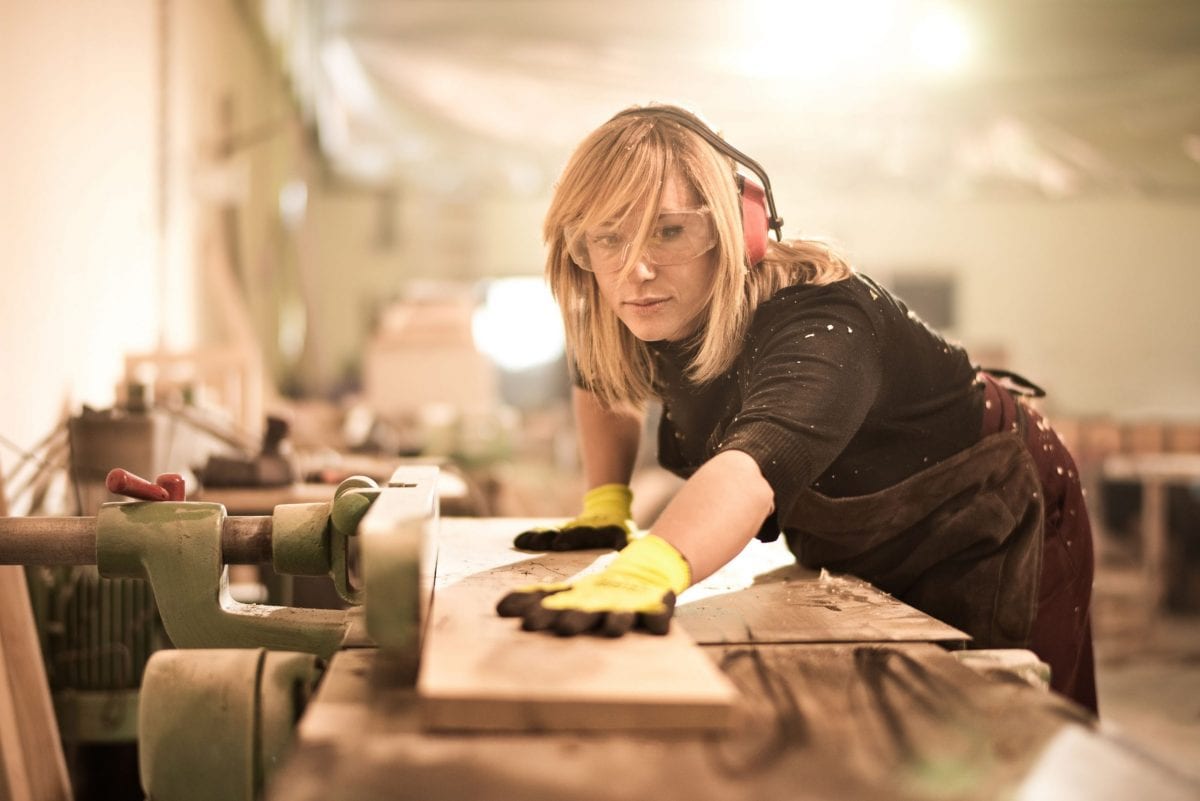What Safety Procedures to Follow For Woodworking Machinery

- Always wear safety glasses or goggles
- Wear dust masks when required.
- Wear hearing protection that is suitable for the level and frequency of the noise you are exposed to in the woodworking area. If you have trouble hearing someone speak from three feet
- away, the noise level from the machine is too high. Damage to hearing may occur.
- Use gloves to protect hands from splinters when handling wood but do not wear them near rotating blades and other machinery parts where the gloves can catch.
- Make sure the guard is in position, is in good working condition, and guards the machine adequately before operating any equipment or machine. Check and adjust all other safety devices.
- Make sure the equipment is properly grounded before use.
- Check that keys and adjusting wrenches are removed from the machine before turning on the power.
- Inspect stock for nails or other materials before cutting, planing, routing or carrying out similar activities.
- Make sure that all machines have start and stop buttons within easy and convenient reach of an operator. Start buttons should be protected so that accidental contact will not start the
- machine. A collar around the button 1/8 to 1/4 inch (3 to 6 mm) above the button is recommended.
- Ensure that all cutting tools and blades are clean, sharp, and in good working order so that they will cut freely, not forced.
- Turn the power off and unplug the power cord (or lock out the power source) before inspecting, changing, cleaning, adjusting or repairing a blade or a machine. Also turn the power off
- when discussing the work.
- Use a “push stick” to push material into the cutting area. Jigs are also useful in keeping hands safe during cutting procedures. Keep hands out of the line of the cutting blade.
- Clamp down and secure all work pieces when drilling or milling.
- Use good lighting so that the work piece, cutting blades, and machine controls can be seen clearly. Position or shade lighting sources so they do not shine in the operator’s eyes or cause any glare and reflections.
- Ensure that the floor space around the equipment is sufficient to enable you to machine the size of work piece being processed safely without bumping into other workers or equipment.
- Woodworking machines should be fitted with efficient and well-maintained local exhaust ventilation systems to remove sawdust or chips that are produced.
- Electric power cords should be above head level or in the floor in such a way that they are not tripping hazards.
- Keep work area free of clutter, clean, well swept, and well lit. Spills should be cleaned up immediately. Floor areas should be level and non-slip. Good housekeeping practices and
- workplace design will reduce the number of injuries and accidents from slips, trips, and falls.